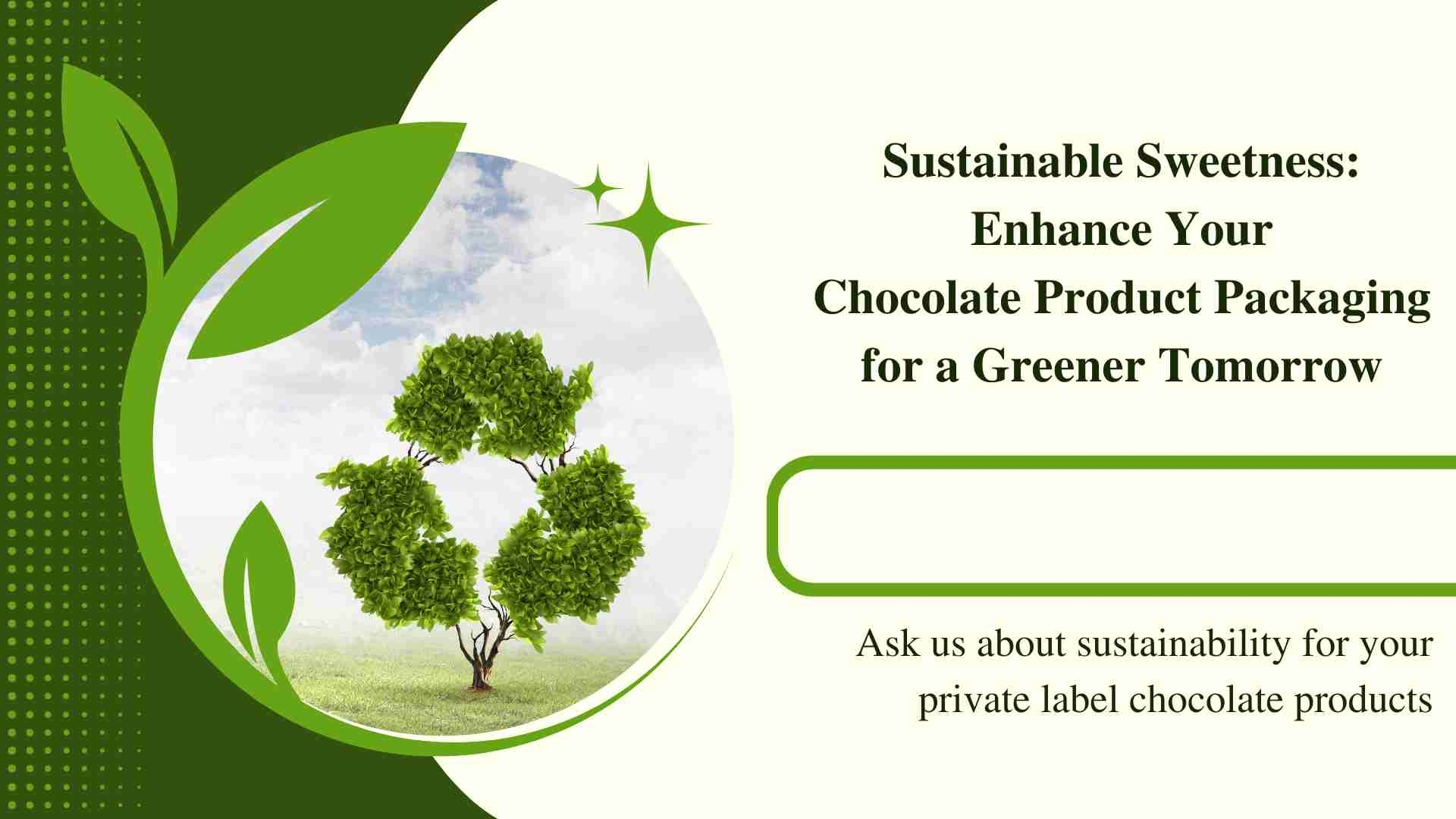Sustainable Sweetness: Enhancing Your Chocolate Product Packaging for a Greener Tomorrow

In today's world, where environmental consciousness is on the rise, consumers are increasingly seeking products that not only satisfy their cravings but also align with their values. For chocolate manufacturers like Hames, this means rethinking their packaging strategies to reduce their environmental footprint.
Embracing sustainability in packaging not only benefits the planet but also enhances brand reputation and consumer loyalty. In this article, we'll explore practical steps that businesses can take to make their packaging more sustainable without compromising on quality or appeal.
1. Opt for Recyclable or Biodegradable Materials:
Transitioning from conventional packaging materials to recyclable or biodegradable alternatives is a significant step towards sustainability. Materials like paperboard, cardboard, or compostable materials can be excellent options for chocolate packaging. These materials can be recycled or break down naturally, reducing the amount of waste that ends up in landfill.
Hames offer a range of options for you to consider in your private label chocolate develpment including paper lollipop sticks, FSC certified hot chocolate spoons, recyclable bags, pouches, chocolate boxes and some trays, compostable / biodegradeable bags.
2. Minimise Packaging:
Less is more when it comes to sustainable packaging. Evaluate your current packaging design and identify areas where you can reduce excess material without compromising product protection. Streamlining packaging not only reduces waste but also minimises shipping costs and carbon emissions associated with transportation.
3. Use Renewable Resources:
Consider incorporating renewable resources into your packaging materials. For instance, opt for paper sourced from responsibly managed forests or bioplastics derived from renewable sources like corn starch or sugarcane. Utilising renewable resources helps conserve finite resources and reduces the carbon footprint of your packaging.
4. Embrace Water Based or Vegetable Based Inks and Printing Methods:
Traditional printing processes often involve harmful chemicals and solvents that are detrimental to the environment. Switching to eco-friendly inks and printing methods, such as vegetable-based inks and digital printing, significantly reduces the environmental impact of your packaging. These alternatives produce vibrant colours while minimising pollution and waste.
5. Design for Reusability:
Encourage consumers to reuse or repurpose your packaging by designing it with functionality in mind. Incorporate features like resealable closures or compartments that can be used for storage after the chocolate has been consumed. By extending the lifespan of your packaging, you reduce the overall demand for new materials and contribute to a circular economy.
6. Provide Clear Recycling Instructions:
Educate consumers about how to properly dispose of your packaging to ensure it is recycled or composted correctly. Clearly label your packaging with recycling symbols and instructions to guide consumers on the appropriate disposal methods. Making recycling easy and convenient increases the likelihood that your packaging will be diverted from landfills and recycled into new products.
7. Collaborate with Suppliers:
If you purchase packaging engage with your packaging suppliers to explore sustainable alternatives and innovative solutions. Work together to identify opportunities for improvement throughout the supply chain, from sourcing raw materials to manufacturing processes. By collaborating with suppliers committed to sustainability, you can collectively reduce the environmental impact of your packaging operations.
By embracing recyclable materials, minimising packaging, utilising renewable resources, working with environmentally conscious suppliers and adopting eco-friendly printing methods, organisations can significantly reduce their environmental footprint. Furthermore, designing for reusability and providing clear recycling instructions empower consumers to participate in sustainable practices.
At Hames Chocolates, packaging and sustainability are an integral part of our product development process. We work very closely with our clients to deliver the best solution for our customers and the environment. As a business we are also firmly committed to improve our own sustainable practices and to reduce our carbon footprint which include solar panels on our factory and working with certified programs such as The Rainforest Alliance and Cocoa Horizons when purchasing our cocoa. Ask us how we can develop private label chocolates and confectionery for you using sustainable cocoa and more environmentally friendly packaging.
#sustainability #chocolatemanufacturing #chocolatepackaging #hameschocolates #privatelabel
